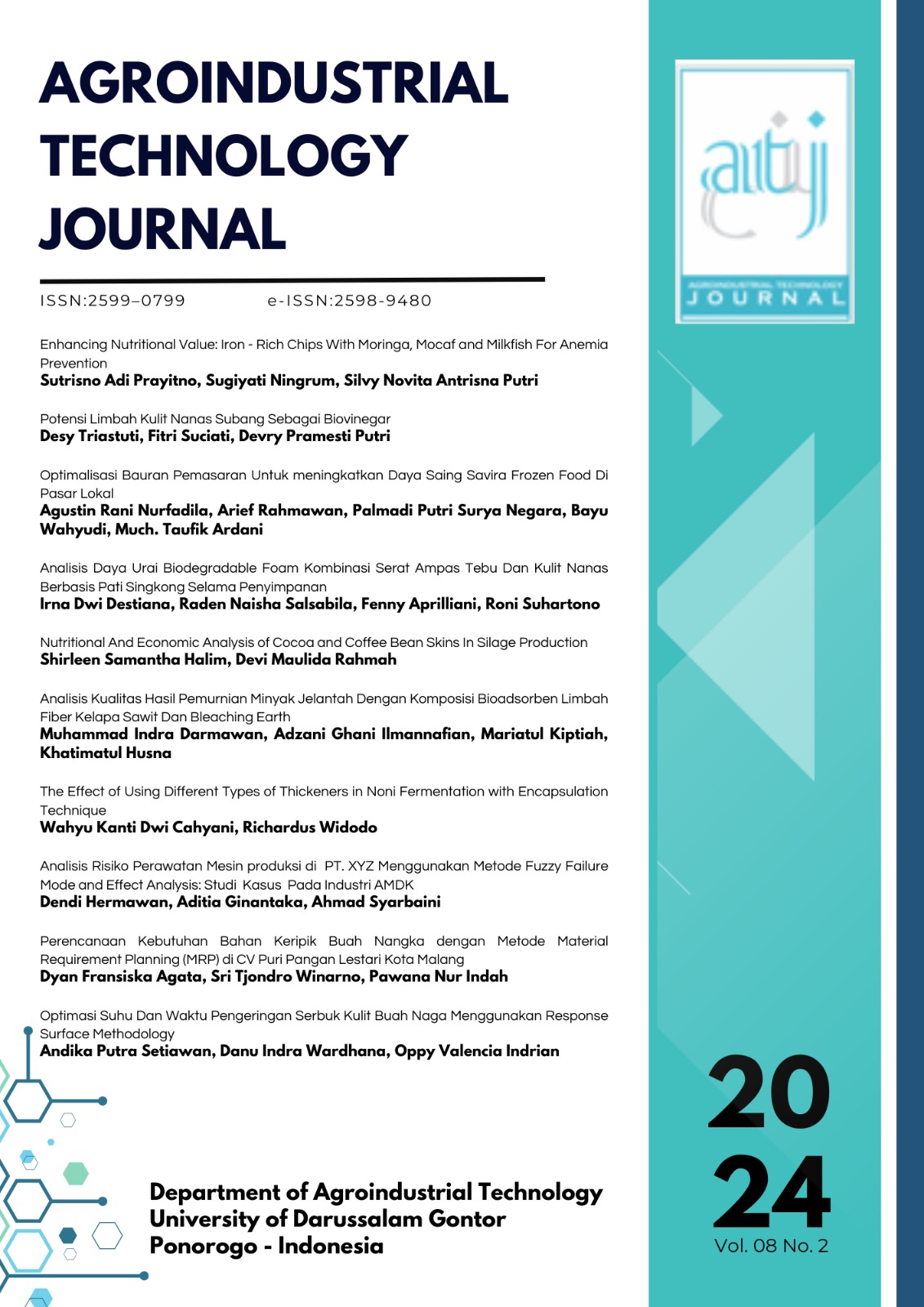THE EFFECT OF USING DIFFERENT TYPES OF THICKENERS IN NONI FERMENTATION WITH ENCAPSULATION TECHNIQUE
DOI:
https://doi.org/10.21111/atj.v8i2.12796Abstrak
Noni is famous for its rich health benefits due to its anti-oncide content, anti-inflamation, and immunomodulatory properties. However, noni is not liked by many people because of its unpleasant taste and aroma so that it becomes an obstacle in its widespread use. Fermentation and Encapsulation techniques on noni are new solutions and innovations to reduce unpleasant tastes and improve the stability of their active compounds during storage and consumption. The objectives of the research are: 1) Making noni fermentation encapsulation and 2) Proximate Test (Protein, carbohydrate, ash and moisture content). The research method includes: 1) producing fermented noni fruit using the encapsulation method, and 2) conducting a Proximate Test. The research design utilizes a Completely Randomized Design (CRD) with a single factor by comparing the effects of noni fermentation and different types of thickeners, namely maltodextrin, xanthan gum, and gelatin, in a 1:2 ratio. Subsequent analysis is performed using SPSS and the BNT (Least Significant Difference) test to determine significant differences. The research findings show that (1) the type of thickener used has a significant effect on moisture content, protein, carbohydrate, and yield; (2) encapsulated fermented noni fruit has a better shelf life compared to liquid fermentation; (3) the lowest moisture content was achieved using maltodextrin as a thickener 9.2%, the highest carbohydrate content with maltodextrin 88.2%, the highest protein content with gelatin 1.6%, the highest ash content with xanthan gum 1.8%, and the highest yield with xanthan gum 0.35%. Keywords: Encapsulation; Noni; Proximate##submission.downloads##
Telah diserahkan
Diterima
Diterbitkan
Cara Mengutip
Terbitan
Bagian
Lisensi

Artikel ini berlisensiCreative Commons Attribution-NonCommercial-ShareAlike 4.0 International License.
The author whose published manuscript approved the following provisions:
1. The right of publication of all material published in the journal / published in the Agroindustrial Technology Journal is held by the editorial board with the knowledge of the author (moral rights remain the author of the script).
2. The formal legal provisions for access to digital articles of this electronic journal are subject to the terms of the Creative Commons Attribution-NonCommercial-ShareAlike 4.0 International License (CC BY-NC-SA 4.0), which means that Agroindustrial Technology Journal reserves the right to save, transmit media or format, Database), maintain, and publish articles without requesting permission from the Author as long as it keeps the Author's name as the owner of Copyright.
3. Printed and electronically published manuscripts are open access for educational, research and library purposes. In addition to these objectives, the editorial board shall not be liable for violations of copyright law.



